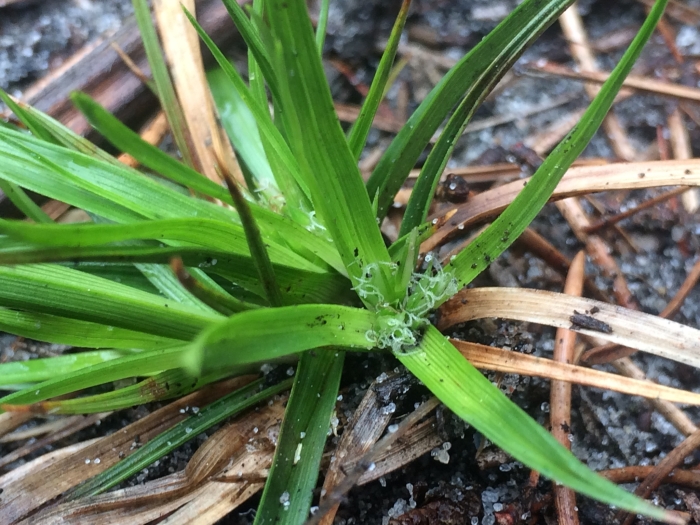Shaved Sedge
(Carex tonsa)
Shaved Sedge (Carex tonsa)
/
/

Derek
CC BY 4.0
Image By:
Derek
Recorded By:
Copyright:
CC BY 4.0
Copyright Notice:
Photo by: Derek | License Type: CC BY 4.0 | License URL: http://creativecommons.org/licenses/by/4.0/ | Rights Holder: Derek | Publisher: iNaturalist | Date Created: 2017-05-28T17:31:05Z |























Estimated Native Range
Summary
Carex tonsa, commonly known as Shaved Sedge, is a deciduous perennial grass native to North American prairies, open woodlands, and meadows, particularly in the North and Northeastern United States and across Canada. It typically grows to a height of 0.2-0.5 feet (0.06-0.2 meters) and spreads to about 0.5 feet (0.15 meters), forming dense tufts of fine-textured, narrow foliage. The plant produces inconspicuous brownish flower spikes in late spring to early summer, which are not particularly showy but add a subtle texture to the landscape.
Shaved Sedge is valued for its adaptability to various soil conditions and its ability to thrive with minimal care, making it an excellent choice for naturalistic plantings, rain gardens, and as a ground cover in restoration projects. It is also used to stabilize soil and prevent erosion. Carex tonsa prefers well-drained soils but can tolerate occasional wet conditions. It is drought-tolerant once established and can handle a range of light conditions from full sun to part shade. There are no major disease or pest issues, but it can become sparse in overly rich or moist soils.CC BY-SA 4.0
Shaved Sedge is valued for its adaptability to various soil conditions and its ability to thrive with minimal care, making it an excellent choice for naturalistic plantings, rain gardens, and as a ground cover in restoration projects. It is also used to stabilize soil and prevent erosion. Carex tonsa prefers well-drained soils but can tolerate occasional wet conditions. It is drought-tolerant once established and can handle a range of light conditions from full sun to part shade. There are no major disease or pest issues, but it can become sparse in overly rich or moist soils.CC BY-SA 4.0
Plant Description
- Plant Type: Grass
- Height: 0.2-0.5 feet
- Width: 0.2-0.5 feet
- Growth Rate: Moderate
- Flower Color: N/A
- Flowering Season: Spring, Summer
- Leaf Retention: Deciduous
Growth Requirements
- Sun: Part Shade, Full Sun
- Water: Medium
- Drainage: Fast
Common Uses
Bird Garden, Deer Resistant, Groundcover, Low Maintenance
Natural Habitat
native to North American prairies, open woodlands, and meadows, particularly in the North and Northeastern United States and across Canada
Other Names
Common Names: Bald Sedge, Deep-Green Sedge, Smooth-Fruited Oak Sedge, Carex À Fruit Glabre, Carex À Fruits Glabres
Scientific Names: , Carex tonsa, Carex umbellata var. tonsa, Carex rugosperma var. tonsa, Carex umbellata f. tonsa,
GBIF Accepted Name: Carex tonsa (Fernald) E.P.Bicknell